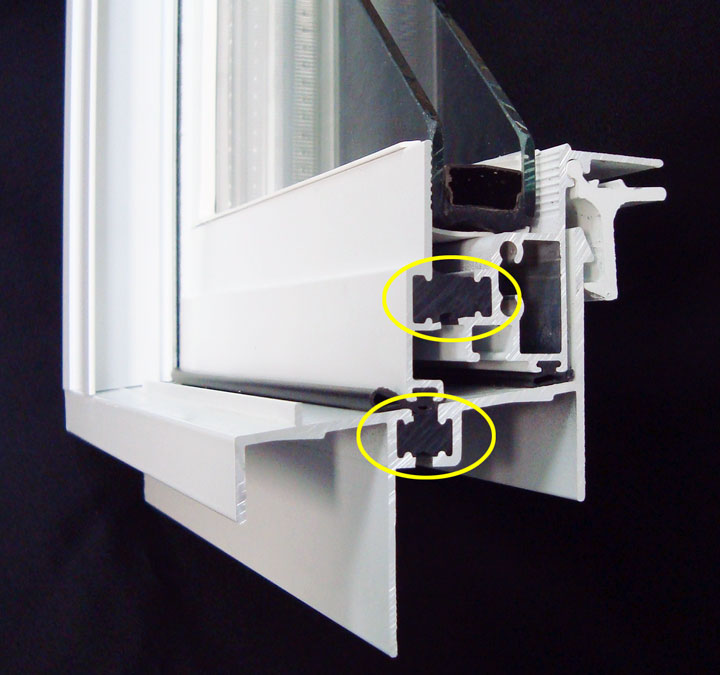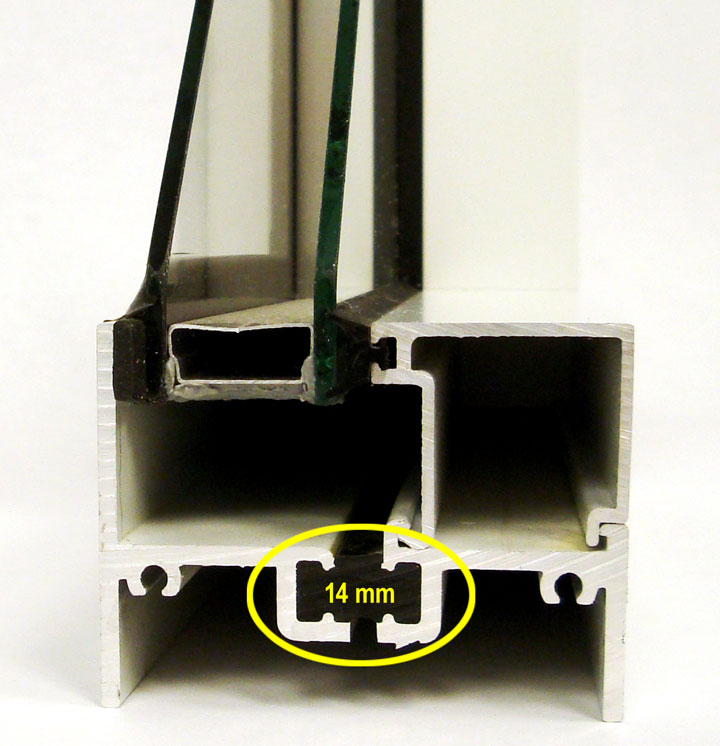
|




|
The thermal performance of windows is affected by the interior environment of the building, external weather conditions, and the way the window is installed. Glass choices and glazing options have a significant impact on thermal performance as well. In addition, window frame modifications can be made. These "thermally improved" frames incorporate one or more thermal breaks, also known as thermal barriers.
A thermal break is defined as a material with low thermal conductivity placed in an extrusion with the purpose of reducing the flow of thermal energy (heat).

In aluminum windows, three types of thermal breaks are used. A standard pocket thermal break has been used in the window industry for decades. An AA-sized pocket is shown below. During manufacturing, a polymer much like epoxy is poured into a pocket in the metal extrusion. After the polymer solidifies, a specialized saw cuts through the pocket wall of the entire length of the extrusion to "debridge" the interior and exterior sections. This process is known as pour and debridge.


Deeper poured and debridged pockets increase the thermal efficiency of the window. A CC-sized pocket is shown below. However, there are structural limitations to the size and depth of the pocket.

In the last decade, a different type of thermal break has been used to enhance thermal performance beyond the capabilities of poured and debridged pockets, albeit at a higher cost. This process uses polyamide strips with very low conductance and relatively high structural strength. Using specialized equipment, the strips are "stitched" into slots in the extrusions.
